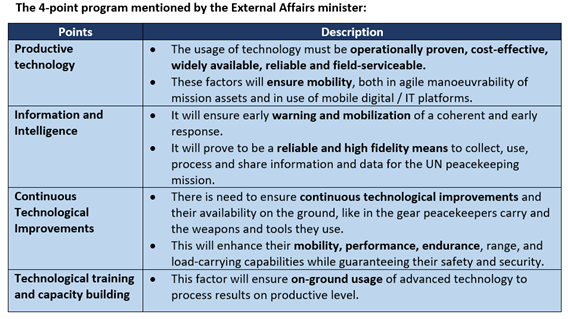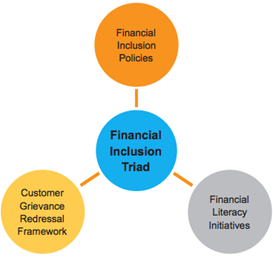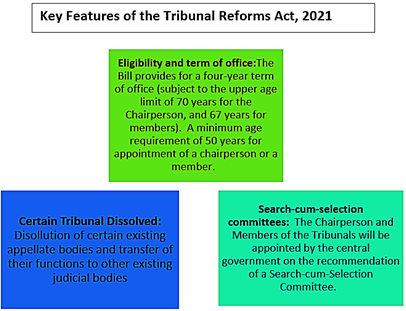Friday, 20th August 2021
Chaff Technology
In News:
The Defence Research and Development Organisation (DRDO) has developed advanced Chaff technology to protect the fighter aircraft against hostile radar threats.
About the News
- Developers: The advanced Chaff material and chaff cartridge-118/I was developed by Defence Laboratory, Jodhpur in collaboration with High Energy Materials Research Laboratory (HEMRL), Pune.
- Manufacturing: The technology has been shared with the industry for mass production to meet the annual rolling requirement of the IAF.
- Variants: DRDO has developed a similar technology for naval ships to protect them from missile attacks. The technology has been developed in three variants. The Indian Navy conducted trials of all three variants in the Arabian Sea on Indian Naval Ship and found the performance satisfactory.
- There are three variants of the Chaff technology, namely Short Range Chaff Rocket (SRCR), Medium Range Chaff Rocket (MRCR) and Long Range Chaff Rocket (LRCR) to meet the navy's qualitative requirements, according to the defence ministry.
- Significance: Indigenous development of this critical technology is one more step towards ‘Atmanirbhar Bharat’ in strategic defence technologies.

What is Chaff Technology?
- About: A chaff is primarily an electronic counter-measure technology used to protect high-value targets such as fighter jets or naval ships from radars and radio frequency guiding mechanisms of the enemy missiles.
- Function: The chaff acts as decoy by reflecting as multiple targets for the missile guidance systems, thus misleading the enemy radars, or deflecting adversary missiles.
- In case of naval ships, chaff rockets are deployed in the air, which act as multiple targets for missile guidance system.
- Similar Technology: Flare is a similar technology, and both are used to as defensive countermeasure to confuse the radar from detecting a vessel or deflect the missiles from the target.
- Difference: While flares, when fired, generate a strong infrared source to attract heat-seeking missiles, chaff is used to misguide radar-tracking weapons. Chaff is composed of many small aluminium or zinc coated fibres. It will be stored on-board the aircraft as cartridges.
Sources:
Smog Tower
Why in news?
Recently, the Delhi government inspected Delhi’s first Anti-Smog Tower, to be inaugurated on soon.
About the News
- The smog tower, in Delhi, is a 24 metre-high structure fitted with fans and air filters and it will draw in polluted air from the top and release purified air near the ground through fans fitted on sides. The tower has 40 big fans and 5,000 filters to clean the air.
- The smog tower is a pilot project and is expected to influence the air quality of more than 1 km in the downwind direction. The smog towers are to be installed on the lines of China, which has experimented with this technology.
- This comes in the backdrop of a Supreme Court order to the Delhi government to build a smog tower at various locations in the city by April 13, 2020, to control air pollution.
About the Smog Tower
- Structural Design: The Smog Tower will be cylindrical in design and built like a pole with a big inlet and four outlet units. The giant air purifier is fitted with exhaust fans to suck in polluted air with the help of a big inlet unit. The tower will run on electricity.
- Working: It will be fitted with multiple layers of filters which trap fine dust particles suspended in the air as it passes through them.
- Air will be drawn through fans installed at the top of the tower, passed through filters, and then released near the ground.
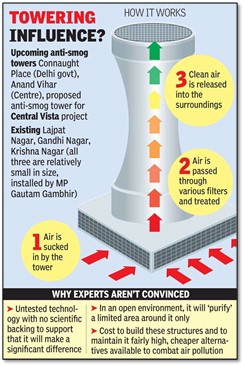
Need for Smog Tower
- Every winter, Delhi- NCR is covered in a thick blanket of smog and the Environmental Pollution (Prevention and Control) Authority’ has to declare a public health emergency.
- Various Factors that contribute to Smog in Delhi
- Stubble Burning in the neighboring states especially Punjab, Haryana, and Uttar Pradesh.
- The Industrial and Construction Activities around Delhi-NCR region.
- The Continentality of the northern India and prevailing Cold conditions create High pressure zone.
Sources:
Defence Testing Infrastructure Scheme
In News
The Defence Ministry will be issuing Requests for Proposal (RFPs) under Defence Testing Infrastructure Scheme (DTIS) to set up eight defence testing facilities in partnership with the private sector.
About Defence Testing Infrastructure Scheme (DTIS)
- Aim: The scheme, launched in 2020, aims to create state-of-the-art testing infrastructure in partnership with the private industry. The scheme would run for a period of five years.
- Funding: The outlay of the scheme is Rs 400 crore and the projects under the scheme will be provided with up to 75 per cent Government funding in the form of ‘Grant-in-Aid’.
- The remaining 25 per cent of the project cost will have to be borne by the Special Purpose Vehicle (SPV) constituents which include Indian private entities and state governments.
- The DTIS envisages setting up of 6-8 Greenfield Defence Testing Infrastructure facilities that are required for defence and aerospace (A&D) related production under private sector with Government assistance.
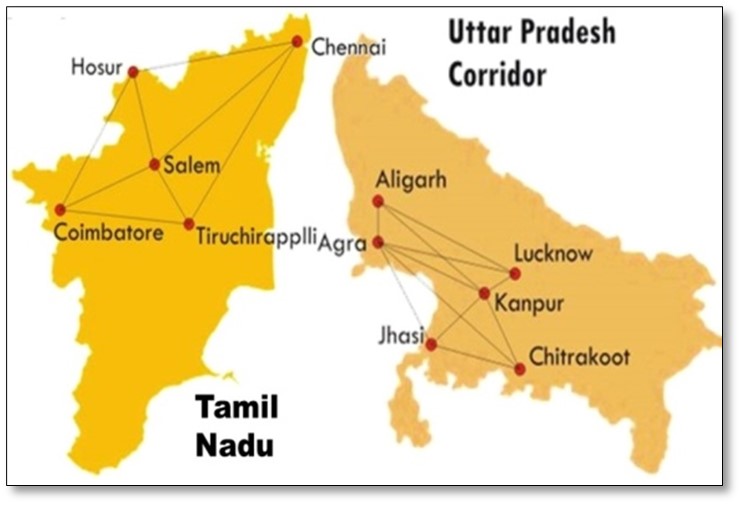
Significance of DTIS
- Provide Essential Facilities: One of the main impediments for domestic defence production is lack of easily accessible state-of-the-art testing It is also economically unviable for individual defence industrial units to set up in-house testing facilities.
- DTIS will enable these facilities in India. Towards this was the establishment of Defence Industrial Corridors (DICs) in Uttar Pradesh & Tamil Nadu.
- Reduce Import dependence: India is among the top five countries with the highest military spending in 2019 and our requirements on defence are catered largely by imports.
- To reduce the dependence on imports, India has accorded high priority to development of the manufacturing base of Defence and Aerospace sectors in the country.
Source:
- Defence Testing Infrastructure Scheme
- Defence Ministry to soon issue RFPs to set up 8 testing facilities
- Development of Defence Testing Infrastructure (DTI) For Environmental Tests under the Defence Testing Infrastructure Scheme (DTIs)
- Defence Manufacturing
Image Source:
Impact of Taliban power in Afghanistan on India
In News
The Taliban have swept through Afghanistan taking all major cities under its command, in less than eight weeks.
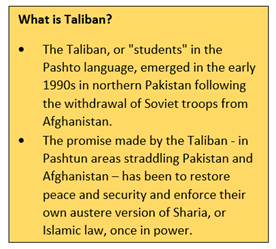
About the News
- The Taliban captured the provincial capitals, then Kabul, as the Afghan National Security and Defense Forces collapsed and melted away. There was chaos at the Kabul airport amid a frantic, tardy, and poorly planned evacuation effort.
- The president of Afghanistan fled the country and the American-backed government collapsed.
- The current strategic environment surrounding Afghanistan is very different from the 1990s and 2001. The Taliban are likely to take over with full recognition from major powers, including the US, China, Russia and the European Union.
India-Afghanistan Relations
- Development contribution: India has been the largest regional contributor to Afghanistan’ development and reconstruction projects, investing more than $3 billion, in the last two decades.
- Cultural Relationship: There have been several exchanges of artistes and music troupes, events like “India-Afghanistan Culture Week”, International Folk Music and Dance Festival.
- The India- Afghanistan Foundation (IAF), a trust fund to finance projects has been established to foster India-Afghanistan relations.
- High Impact Community Development Projects (HICDP): Since 2005, India and Afghanistan have partnered in the area of community development through the HICDP program. Under this scheme, US$ 120 mn has been committed till date to various small to medium scale.
- Human Resource Development and Capacity Building: On an average, more than 3,500 Afghan nationals have been trained in India every year. More than 15,000 Afghan students have pursued education in India on self-financing basis.
- Strategic Relationship: Afghanistan has always been crucial for India’s strategic interests in South Asia. In 2011, the two nations signed the India-Afghanistan Strategic Partnership Agreement which helped enhance trade and bilateral ties further.
- Projects: Afghanistan is one of the few countries where India has delivered many functional projects, including the Afghan Parliament building at an estimated cost of $90 million.
- An agreement for the construction of the Shatoot Dam in Kabul district, a project that aimed to provide drinking water to roughly 2 million residents, was also signed recently.
- Trade: Afghanistan also got duty-free access to the Indian market as part of the agreement. As of 2019-20, bilateral trade between India and Afghanistan was estimated to be over $1 billion.
What will be the impact of the Taliban regime on India-Afghanistan relation?
- Taliban’s entry into Kabul marks the beginning of a new phase in the relationship between Afghanistan and India.
- Past experiences with the Taliban will shade India’s advance. India had no diplomatic presence in Afghanistan during the first Islamic Emirate of Afghanistan.
- If the Taliban practice what they have been preaching, India might just be able to find a workable balance between present engagements in Afghanistan without necessarily legitimizing the Islamic emirate.
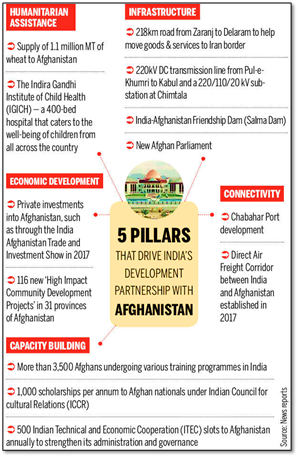
What can be the possible impacts on India due to Taliban Regime?
- Threat to Indian Investments: The first and foremost ramification for India will be the threat to its investments. After the control of the Taliban over Afghanistan, all the projects are likely to be stopped abruptly.
- Safety of Indian Nationals in Afghanistan: As of date, all the Indian Consulates have been shut down and evacuation of Indian staff and nationals is in process.
- There are more than 2200 Indian Citizens in Afghanistan now which will be a direct target by the Taliban. Taliban has not yet given any assurance about the safety of Indian Nationals too.
- Rise of International Terror Groups: The rise of International Terrorism is another aspect which will follow Taliban, as it is a proxy of Pakistan and has been controlling various terror groups like Haqqani Network, Lashkar-E-Toiba, Al-Qaeda, and even the Islamic State.
- There have also been several infiltration attempts in Kashmir where groups of foreign mercenaries trained and operated in Afghanistan have tried to enter Kashmir.
- International Drug Trade: Taliban’s economy is primarily based on the production of Opium, Heroin, and other drugs. The drug industry will work like a government-backed program which is a serious threat to India and the world.
- It is estimated that in the year 2020, more than 85% of the world’s heroin came from Afghanistan primarily from Taliban-controlled areas.
- Trade: Afghanistan is a landlocked country and the air route is the main medium of exports and that has been disrupted. Trade will resume only after the uncertainty will get down.
- Geo-political: The new security and economic architecture in Afghanistan is going to be different form the one followed by Kabul in the last 20 years. The new influencers, viz. China, Pakistan, Russia and Iran, and will welcome the diminishing US influence. China and Pakistan will also try to minimize Indian engagement.
Way Forward
- Wait and Watch: Since India has not been in a position to influence the outcome in Afghanistan, it is time for New Delhi to carefully monitor the evolving situation and wait for the opportunity for new engagements. The Taliban government, even under Pakistani influence, will need broader recognition and economic opportunities arising from Indian linkages.
- Broader Diplomatic Engagement: India could consider appointing a special envoy dedicated to Afghan reconciliation. The envoy can ensure that Indian views are expressed at every meeting, broaden engagement with the Afghan government and other political actors, and reach out to certain Taliban representatives.
- Working With and Through Others: India could look to broaden its engagements with Iran and Russia, explore opportunities for cooperation (as limited as they might be) with China, and find common ground with the United States on Afghanistan’s future. Thus, India can invest in a wider diplomatic initiative with the view to carve out areas of convergence.
Conclusion: Like all radical groups, the Taliban will have trouble balancing its religious ideology with the imperatives of state interests. Delhi would want to carefully watch how this tension plays out. The Taliban juggernaut is endeavouring to project a more moderate image of itself to a global audience that has vivid memories of its draconian rule in the 1990s. The world will need more than just words by way of evidence in the coming months.
Question: Discuss the various elements of India-Afghan relationship. What can be the possible impacts on India due to Taliban government in Afghanistan?
Sources:
- Taliban Captures Afghanistan | What it means for India
- Afghanistan: The Taliban's victory will test India, and peace in South Asia
- Taliban gains complicate India’s options
- Taliban takeover in Afghanistan to impact trade with India, says CAIT
- Afghanistan Under the Taliban
- New Taliban regime casts shadow on India biz in Afghanistan
- In Kabul, the centrality of Pakistan
- Taliban has taken Kabul. Delhi must watch, not pronounce doom
- Understanding the strategic flux and humanitarian crisis in Afghanistan
- Implications of the Evolving Situation in Afghanistan
- The turn in Afghanistan will threaten Indian security
- Decoded | India’s investments in Afghanistan as Taliban return
- Who are the Taliban?
- India-Afghanistan Relations
- Rise of Taliban in Afghanistan – Ramifications for India After Fall of Kabul
This Day in History - Rajiv Gandhi
On August 20, 1944, former Prime Minister of India Rajiv Gandhi was born. He was the seventh and youngest Prime Minister of the country and served from 1984 to 1989. Rajiv Gandhi is hailed as the 'Father of Information Technology and Telecom Revolution of India'. It was under his rule that Centre for Development of Telematics (C-DOT) was established. In 1986, MTNL (Mahanagar Telephone Nigam Limited) was established which helped in the spread of telephone network. Rajiv Gandhi is credited with laying the foundation of Panchayati Raj institutions.
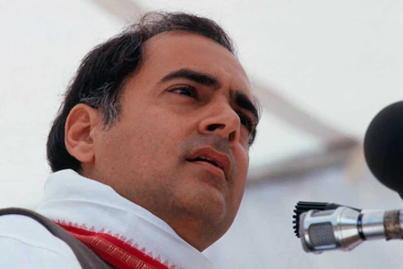
Sources:
Image of the Day - Gartang Gali
This is the image of Uttarkashi’s ancient Gartang Gali wooden bridge. The historic over 150-year-old Gartang Gali wooden bridge located at a height of 11,000 feet in Nelong Valley in Uttarakhand’s Uttarkashi district near the Indo-China border reopened for tourists after 59 years recently, after renovation. Gartang Gali bridge, on an ancient trade route to Tibet, is believed to have been built by Peshawar Pathans. It was damaged over the years after it fell into disuse following the Indo-China war in 1962 when it was declared off-limits.
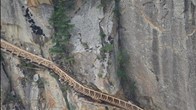
Source:
Community Policing- Ummeed
- Context: Delhi PoliceCommissioner has inaugurated a community policing programme ‘Ummeed’.
- Community Policing is defined as a law enforcement philosophy that allows police to fulfil their duties with citizens’ support.
- With the principle ‘A Policeman is a Citizen with Uniform and a Citizen is a Policeman without Uniform’, the essence of it is to minimize the gap between policemen and citizens to such an extent that the policemen become an integrated part of the community they serve.
- This allows public safety officers to engage with local residents and prevent crime from happening instead of responding to incidents after they occur.

Source:
- Internal Security and Community Policing
- What is Community Policing?
- Importance of Police-Community Relationships and Resources for Further Reading
- Every Citizen is a Police Officer
- Community policing drive inaugurated
Image Source:
UNITE Aware Platform
- Context: India, in collaboration with the United Nations (UN), has launched a technology platform-UNITE Aware.
- UNITE AWARE is a situational awareness software program which utilizes modern surveillance technology to provide real-time threat assessment and terrain-related information to improve the overall security situation of UN Peacekeepers.
- Using the platform, the entire peacekeeping operation can be visualized, coordinated, and monitored on a real time basis.
- Peacekeepers can access live video and satellite imagery and receive early warning in a volatile environment.
- India has developed it in partnership with the UN Department of Peacekeeping Operations and the Department of Operational Support.
- The platform will be deployed initially in four UN Peacekeeping Missions: MINUSMA (Mali), UNMISS (South Sudan), UNFICYP (Cyprus)and AMISOM (Somalia).

Source:
- India in collaboration with UN launches tech platform for peacekeepers
- Jaishankar announces rollout of tech to help protect U.N. peacekeepers
Image Source:
RoDTEP Scheme
- Context:Ministry of Commerce and Industry has announced rates of tax refunds under the Remission of Duties and Taxes on Exported Products (RoDTEP) scheme.
- The RoDTEP scheme would refund to exporters the embedded central, state and local duties or taxes that were so far not being rebated or refunded and were, therefore, placing India’s exports at a disadvantage.
- The rebate under the scheme would not be available in respect of duties and taxes already exempted or remitted or credited.
- Rebates will be issued in the form of a transferable duty credit/electronic scrip (e-scrip) which will be maintained in an electronic ledger by the Central Board of Indirect Taxes and Customs (CBIC).
- It was started in January 2021as a replacement for the Merchandise Export from India Scheme (MEIS), which was not compliant with the rules of the WTO.

Source:
- RoDTEP scheme: Rs 12,454-cr outlay; steel, pharma left out
- Tax refunds for exporters: Will the new scheme help?
Image Source:
Maharaja Ranjit Singh
- Context: The statue of Maharaja Ranjit Singh unveiled in 2019 at the Lahore Fort was vandalised.
- Maharaja Ranjit Singh (1780-1839) was the founder of the Sikh Empire, which ruled the northwest Indian subcontinent in the early half of the 19th century.
- He was given the title Lion of Punjab (Sher-e-Punjab) for his success in freeing Lahore (capital) from the Afghan invaders.
- He was born in Gujranwala, now in Pakistan as the only child of Maha Singh, on whose death in 1792, he became chief of the Shukerchakias, a Sikh group.
- He combined the strong points of the traditional Khalsa army with western advances in warfare to raise Asia’s most powerful indigenous army of those times.
- He had employed many European officers, especially French, to train his troops.
- He was known for his just and secular rule as both Hindus and Muslims were given powerful positions in his darbar.
- He turned Harimandir Sahib at Amritsar into the Golden Temple by covering it with gold.
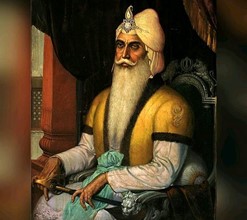
Sources:
- Ranjit Singh’s statue vandalised at Lahore Fort; shows growing intolerance in Pak: MEA
- Ranjit Singh
- Explained: The enduring legacy of Maharaja Ranjit Singh of Punjab
Image Source:
In a competitive marketplace, protecting India’s gig workers
Essence: India’s gig economy is among the few sectors offering flexible work to unemployed millions. But several issues like outdated, static mechanisms such a grievance redressal officers, or onerous labour laws cannot keep pace with the gig economy and complaint of worker causing trust deficit between the gig workers and the platforms. To tackle this, we need to harness the power of technology through algorithm audits, sock puppets, etc. Also, informed consumers can prioritise ordering from platforms that subject themselves to such audits. Workers may also choose to work for more transparent platforms. Regulators can examine work conditions as a function of work allocation, performance, and pay related to each gig, and mandate transparency related to each of these.
Why should you read this article?
- To get an overview of India’s gig economy and what are the issues associated with.
- To know what possible solutions could be taken to tackle the same.
Source:
The Abraham Accords as India’s West Asia bridge
Essence: The article discusses how the signing of the Abraham Accords is a deal signed between Israel and a consortium of Arab States led by the United Arab Emirates (UAE) in 2020, and how it will prove to be beneficial in removing strategic obstacles for New Delhi and aided defence cooperation. In the same concern, an Indian contingent of the Indian Air Force (IAF) will now visit Israel in October to take part in multilateral military exercises. A hurdle for New Delhi that is of trapeze wire delicate balancing act for which India has had to play out between countries like Iran, Turkey, and Israel. The situation is now changing as Israel inaugurates its first diplomatic mission in Abu Dhabi. The article also does talks about the military cooperation exercise that happened between India and Israel.
Why you should read this article?
- To understand the significance of Abraham Accords for India’s strategic growth.
- To understand the past military cooperation between India and Israel.
- To understand the importance of the trapeze wire delicate balancing act.
Source:
What India’s informal sector needs right now
Essence: This article highlights the need for focusing on the Informal sector which has suffered the most in past five years, first due to demonetization and then due to the two consecutive waves of Covid-19. Informal sector which employs almost 80% of the workforce and contributes almost 50% to the GDP is crucial for any economy due to its direct influence on inflationary trends and the overall GDP growth rate.
Though the informal sector needs to be formalized but care should be taken that it should not be forced formalization which leads to eviction of small and informal sector, rather it should be an organic one which help small and informal firms grow over time into medium or larger formal sector firms.
Why you should read this article?
- To develop an understanding of the problems faced by an informal sector.
- How formal sector was in an advantageous position than the informal one and the reasons behind it.
Source:
India’s first ‘Water Plus’ city
Background
- About 80% ofsewage waste generated in India goes into the rivers without being treated.
- Dysfunctionaland outdated sewage treatment plants lead to wastewater entering natural water bodies without treatment.
Indore became the first Water Plus city
- As per the guidelines from the Union Ministry of Housing and Urban Affairs, a city can become Water Plus by treating all wastewater.
- No sewage water without treatment should enter rivers or drains directly.
- Public and community toilets should connect with sewage lines and 30% of the wastewater generated by the city should be recycled for reuse.
How did Indore achieve such a feat?
- City administration plugged sewage emissions and nullahs draining into the rivers.
- Stopping sewage flowing from squatters and slums.
- Modifying sewage treatment plant by treating the waste as per the norms before releasing it in water bodies.
Source:
Share the article
Get Latest Updates on Offers, Event dates, and free Mentorship sessions.

Get in touch with our Expert Academic Counsellors 👋
FAQs
UPSC Daily Current Affairs focuses on learning current events on a daily basis. An aspirant needs to study regular and updated information about current events, news, and relevant topics that are important for UPSC aspirants. It covers national and international affairs, government policies, socio-economic issues, science and technology advancements, and more.
UPSC Daily Current Affairs provides aspirants with a concise and comprehensive overview of the latest happenings and developments across various fields. It helps aspirants stay updated with current affairs and provides them with valuable insights and analysis, which are essential for answering questions in the UPSC examinations. It enhances their knowledge, analytical skills, and ability to connect current affairs with the UPSC syllabus.
UPSC Daily Current Affairs covers a wide range of topics, including politics, economics, science and technology, environment, social issues, governance, international relations, and more. It offers news summaries, in-depth analyses, editorials, opinion pieces, and relevant study materials. It also provides practice questions and quizzes to help aspirants test their understanding of current affairs.
Edukemy's UPSC Daily Current Affairs can be accessed through:
- UPSC Daily Current Affairs can be accessed through Current Affairs tab at the top of the Main Page of Edukemy.
- Edukemy Mobile app: The Daily Current Affairs can also be access through Edukemy Mobile App.
- Social media: Follow Edukemy’s official social media accounts or pages that provide UPSC Daily Current Affairs updates, including Facebook, Twitter, or Telegram channels.

